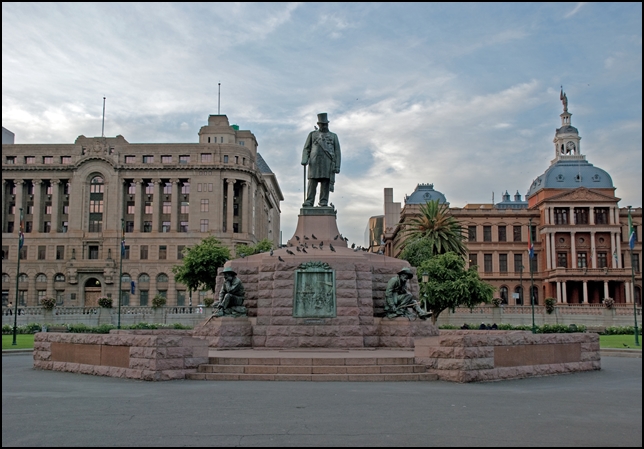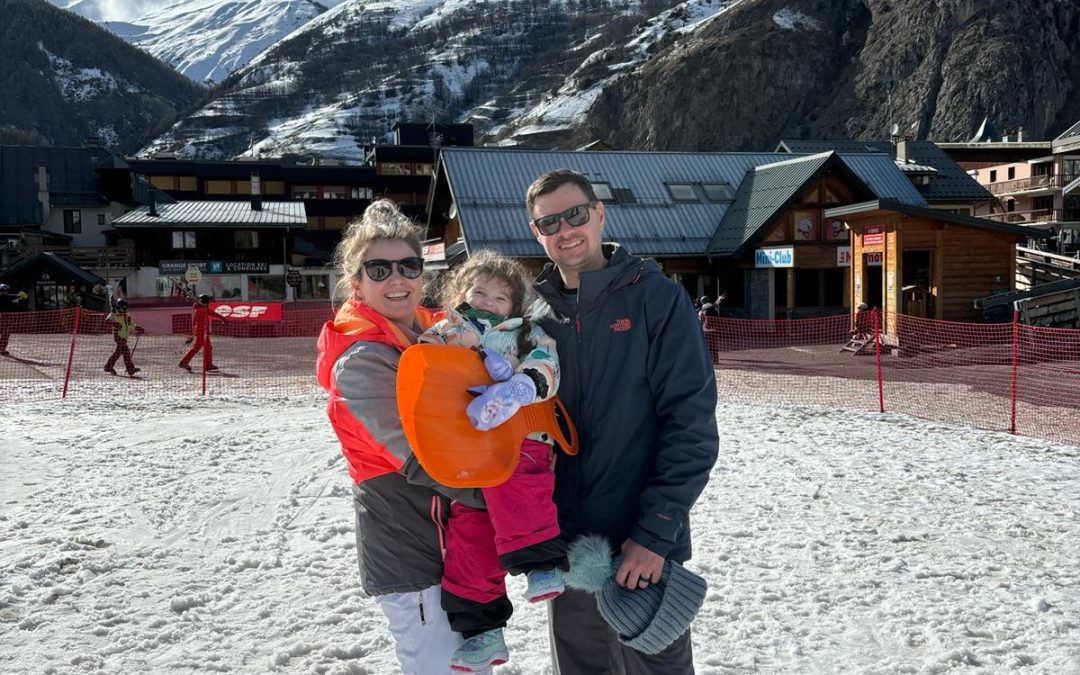While storms are raging about history, and protesters recently have danced with spray paint around Paul Kruger’s statue on Church Square in Pretoria, this old head of state is staring silently in the distance. His stone feet may (still) stand on Church Square with his Boer soldiers next to him, but the road leading up to that square was not an easy one. One can rightly ask: What brought you here?
The story of the Kruger statue began in 1895 – only a few years before the outbreak of the Anglo Boer War in 1899 – when Jewish businessman Sammy Marks indicated in a letter to Paul Kruger that he had decided to donate £10 000 to Pretoria for erecting a marble statue of the head of state. What was left of the donation should be spent in favour of Pretoria according to Kruger’s wishes. Kruger also had to decide where the statue would be erected.
According to Die geskiedenis van die Krugerstandbeeld by J.H. Breytenbach (published in 1954 by the Krugergenootskap), Kruger decided that Burgerspark was the most suitable place for the statue. After careful consideration, it was decided that a copper statue would be more suitable than marble for the Transvaal weather conditions, and young Anton van Wouw was appointed as sculptor
After Marks insisted, it was decided in 1899 to erect the statue on Church Square. He believed that the statue should be erected “in het centrum der stad” (in the city centre) where “ieder bezoeker van onze hoofdstad direct het beeld in het oog krijgen zal” (every visitor to the capital would immediately see it). However, it would take many years’ pleading before it would eventually happen.
The giant statue and its four Boer guards were completed shortly before the outbreak of the war in October 1899. However, Kruger focused on the imminent war and the erection of the statue was postponed. The casted statues were shipped from Europe but had to lay waiting in the port in Delagoa Bay (nowadays Maputo) until the war came to an end. So, the statue of the ZAR head of state has never been erected in the capital at the time of the ZAR.
With the war in full swing and Pretoria eventually being captured by the British, Mark’s hope faded that the statue would ever be erected. Meanwhile, he still paid storage for the statues in the harbour. When Lord Kitchener moved his headquarters to Marks’ farm Swartkoppies during the Battle of Donkerhoek, he requested Marks to donate the four Boer statues to him (Kitchener), and Marks agreed. Marks later admitted to journalist and historian Gustav Preller that his answer was, “Daar lê hulle in Delagoabaai, hulle kos baie geld en bergloon, vat hulle maar weg.” (There they lay in Delagoa Bay, costing a lot of money and storage; take them away.)
Kitchener was a fast worker, and before long the four Boer soldiers were shipped to Britain. However, the Kruger statue itself remained in the harbour. The Boer statues were erected in front of the Woolwich and Sandhurst Military College but were moved to Chatham’s School of Military Engineering after protests. Shortly afterwards it was moved again. Two of the statues were donated to the school, and Kitchener moved the others to his private estate at Broome Park. “En so het die bronsbrandwagte, wat bestem was om die figuur van Paul Kruger te bewaak, nou in groot tuine in Engeland – o.a. ook in dié van die Britse opperbevelhebber wat die twee Republieke vernietig het – gepryk,” Breytenbach wrote in his history of the statues. (And so, the bronze guards, who were supposed to guard Paul Kruger’s statue, ended up in large gardens in England – among others, the garden of the British commander-in-chief who destroyed the two Republics.)
Meanwhile, the British government decided that the pedestal erected for the Kruger statue on Church Square before the war would be broken down. The pedestal was eventually erected in Prinsepark by 1905.
After Paul Kruger passed away, General Louis Botha endeavoured to get the Kruger statue erected and requested Kitchener to return the statues of the guards. However, Kitchener was not willing to comply and argued that the statues were a personal gift from Marks, not spoils of war.
The city council of Pretoria also made efforts to have the statue erected, but Marks was only prepared to hand over the statue provided the entire statue group – Kruger and the four Boer soldiers – would be erected. Plans were made to recast the other statues, but the original moulds had already been destroyed, and to make castings of the existing bronze statues in England would cost at least £1 760 – something to which the city council did not see their way open.
Marks eventually agreed that Kruger could be erected without his four soldiers, and so the Kruger statue was first erected on 24 May 1913, Victoria or Empire Day, in Prinsepark in Kruger’s beloved Pretoria. During the inauguration, speakers made it clear that the monument was not erected where it really belonged. For example, the politician A.D.W. Wolmarans testified, “Ek wil die gedagte uitspreek van my hart en my volk dat daar pogings aangewend moet word om die standbeeld te verplaas na die Kerkplein, na die sentrum van die hoofstad, sodat dit die plek kan inneem wat dit toekom.” (I want to express my heart’s desire and my people’s thinking that efforts must be made to move the statue to Church Square, to the centre of the capital, so that it can take its rightful place.) He also insisted that the other statues should be returned.
Despite several attempts to return the four soldiers to South Africa, there has been no success for many years – until General Jan Smuts, at that time Prime Minister of the Union of South Africa, became actively involved. Thanks to requests from Smuts, the message that all four statues would be returned was finally received on 18 January 1921. Although the Union government had to cover the transport costs, Smuts seized the offer and by 12 September 1921 the statues and all the pieces of the monument arrived in Pretoria.
Once again, the plan to erect Kruger and his soldiers on Church Square was out of reach. By 1920, plans had been made to erect a memorial on Church Square for South African soldiers who were killed during World War I. Kruger supporters still hoped to erect the Kruger statue there one day. To defuse the situation, it was decided not to accede to requests from either of the two parties. A new site was earmarked for the war memorial at the Union Buildings, and Kruger was given a stand in front of the Pretoria station. Kruger was therefore moved to the station square, where he stood on the base of Scottish granite originally erected on Church Square. On 10 October 1925 – 100 years after the former president’s birth, Kruger’s statue was unveiled there.
It would take another almost 30 years before the monument – due to the work of, among others, the Krugergenootskap – would be erected in its present place on Church Square. Sammy Marks’ dream of 1895 to erect a statue of Paul Kruger at the central gathering venue in the capital, was finally realised nearly 60 years later when the statue, complete with its four warriors, was unveiled in 1954 in all its glory.
In the recent past, Kruger’s position was contemplated again, and like that of other statues in South Africa, it remains a focal spot. While Oom Paul stares north (instead of east as was planned originally), new storms are raging about him. Who knows where he and his walking warriors will find themselves in 30 years from now.










